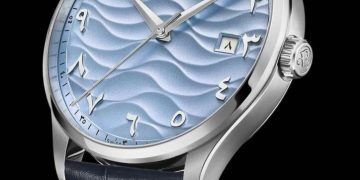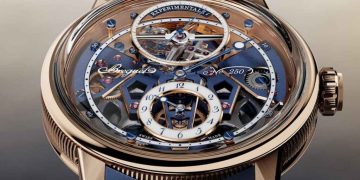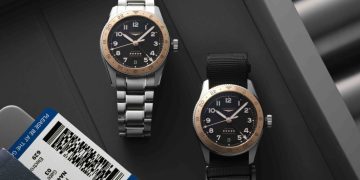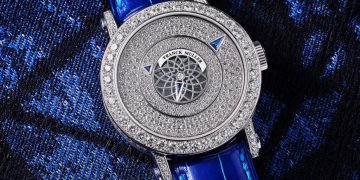Credits: Article and images by Tim Mosso @ Quill & Pad. See the original article here - https://quillandpad.com/2024/09/06/the-golden-age-of-rolex-movements-part-i-sowing-the-seeds-of-greatness-2/
—————————————————————————————————–
Rolex and Aegler: rent to own (your manufacture)
Events proceeded apace of engineering. April 2004 witnessed a development little noticed outside of the watch industry: Rolex purchased its longtime movement supplier, Aegler, from its controlling Borer family.
The two enjoyed a fruitful relationship dating back almost a century and were highly integrated, but it remains surprising from the vantage point of 2019 to think that Rolex took full control of its movement supply only 15 years ago. This newfound capability soon would be tested.
Case back fit for a (Rolex) Prince
The next public revolution in Rolex movement design came in an unprecedented form: a sapphire crystal display case back.
For the first time in series production, a Rolex caliber was designed expressly for visibility through a showcase window, and the now Cellini-branded Rolex Prince of 2005 served as the unlikely vessel.
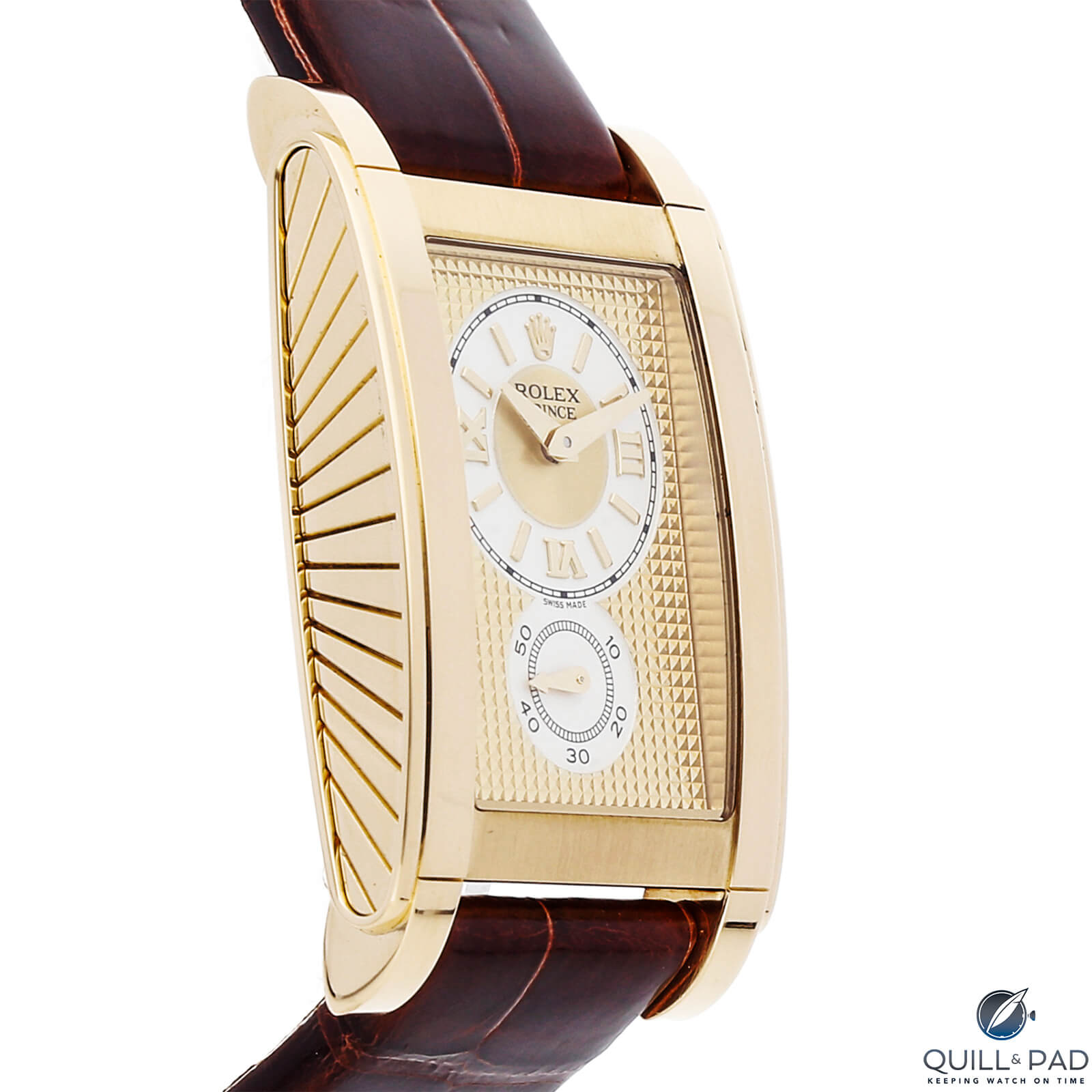
Rolex Cellini Prince Reference 5440-8 (photo courtesy WatchBox)
Initially launched as the Rolex Prince in 1928, this rectangular family of interwar Rolex shaped watches enjoyed its glory years during the heyday of Art Deco style and the parlous balance between gilded towers and Depression-era privation.
And the original Prince was a testbed for flamboyant concepts: fused “tiger stripe” white-and-yellow-gold models, board-flat “brancard” styles, and jump hours all had their day before the Prince line became uncool in the postwar world of the late 1940s.
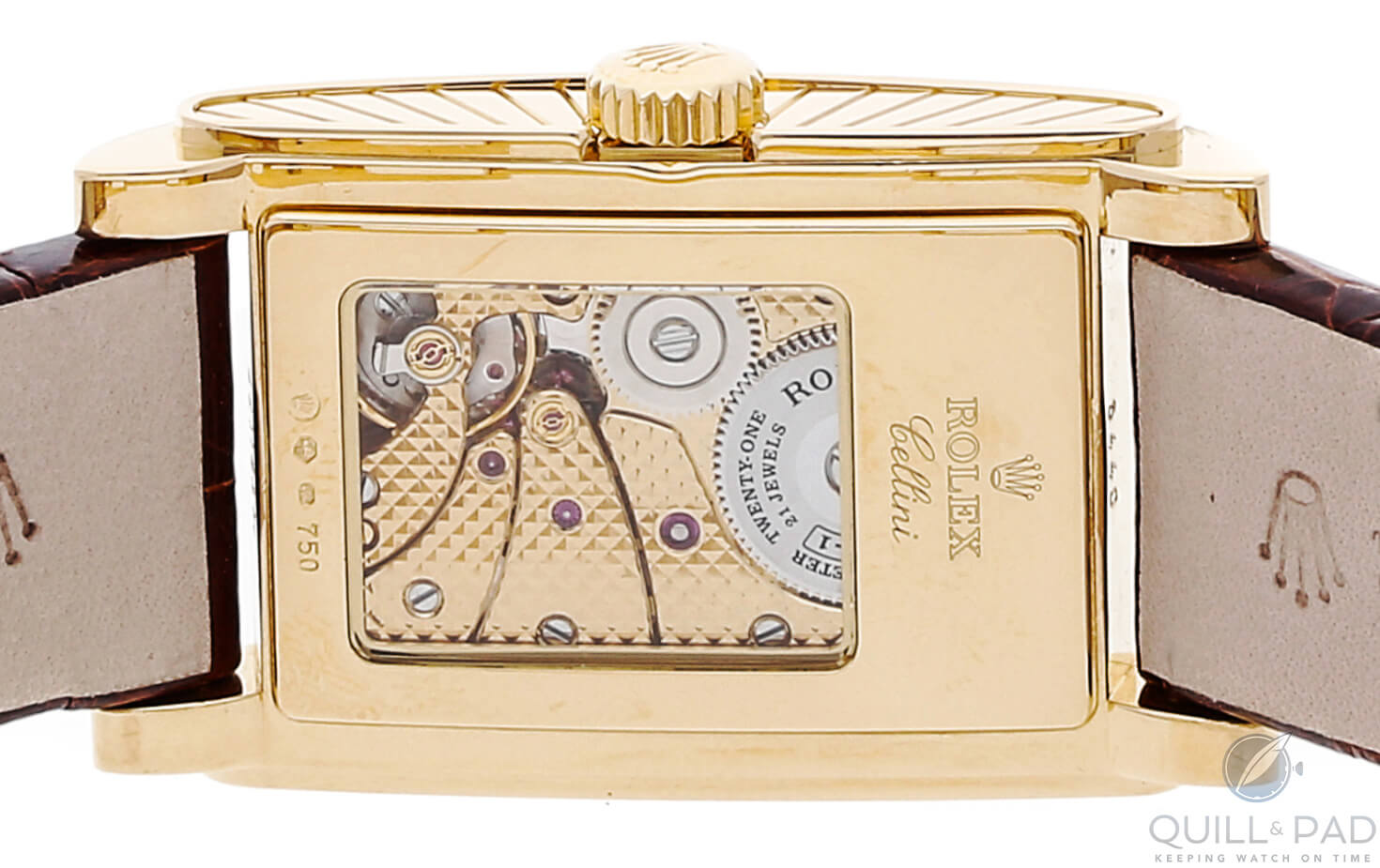
Rolex Cellini Prince Caliber 7040 (photo courtesy WatchBox)
The precious metal-only Prince of 2005 was no less ambitious. All four versions of the watch featured movements expressly designed and finished to mirror the style and features of each respective model’s dial.
Yellow gold with a “pyramide” flourish included a yellow-gold set of bridges with matching peaks. White and pink gold could be ordered with an extravagant “rayon” motif.
A second white gold model boasted rippling silver gadroons worthy of a 1936 coffin-nose Cord 812.
More than simply a bridge motif, the style theme of the Cellini Prince’s Caliber 7040 extended to the very structure of the movement.
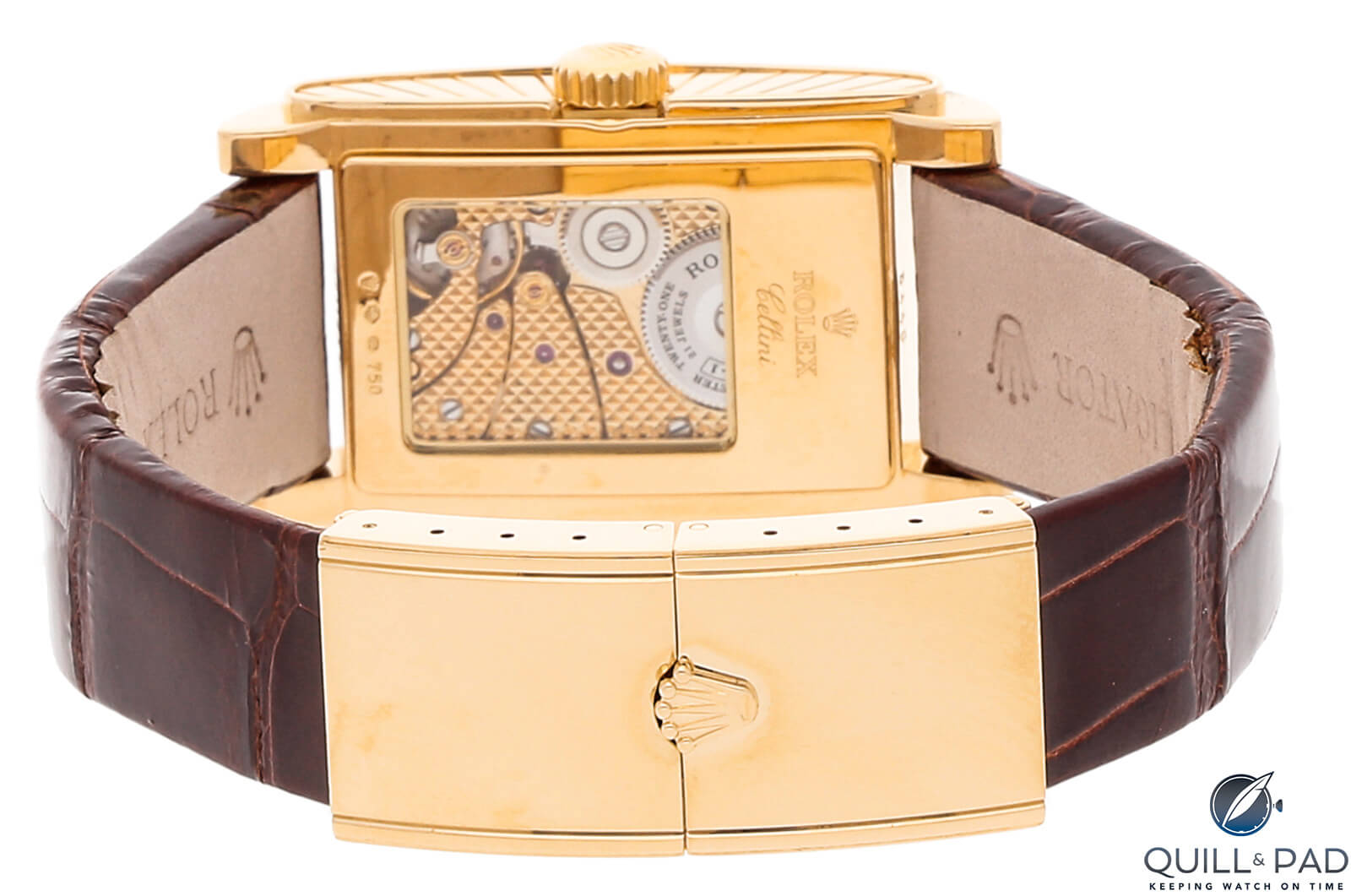
The sapphire crystal case back of Rolex’s Cellini Prince Reference 5440 (photo courtesy WatchBox)
Rolex drew on the Prince’s history and chose the manual-wind format expressly to make the 7040 a visible and forceful feature of the watch. Vintage-inspired “finger” bridges led the power train from a brilliantly polished ratchet wheel to the balance.
As a modern manual-wind Rolex caliber, the 7040 in all four versions is a rarity; this arrangement was chosen to maximize movement visibility, and Rolex carefully designed bridges for a manual caliber rather than leave structural relics by converting an existing automatic.
No corners were cut: the 70-hour power reserve was only Rolex’s second after the Daytona, each Cellini Prince was an officially certified C.O.S.C. chronometer, and each featured the same fundamental full-bridge/free-sprung balance architecture of the sports watches.
The second act awaits
While the in-house Daytona and the Cellini Prince broke dramatically with past Rolex practice, they were table-setters for the most dramatic developments in the company’s watchmaking since the mid-twentieth century.
Even as watch media descended on the reborn Prince collection at Baselworld 2005, Rolex patent filings suggested greater exploits awaited behind the crowned giant’s iron curtain of secrecy.
For more, please visit www.rolex.com.
Quick Facts Rolex Oyster Perpetual Cosmograph Daytona Ref. 116500LN
Case: 40 x 12.2 mm, stainless steel with ceramic bezel
Movement: automatic Caliber 4130 with blue Parachrom hairspring, 72-hour power reserve, 4 Hz/28,800 vph frequency, officially certified C.O.S.C. chronometer (white or black dials)
Functions: hours, minutes, hacking seconds; chronograph
Years of manufacture: 2000 through present
Price: $12,400/€11,300
Quick Facts Rolex Cellini Prince, base Reference 544
Case: 46.3 x 28 x 9.8 mm, yellow gold
Movement: manual winding Caliber 7040, 70-hour power reserve, 4 Hz/28,800 vph frequency, officially certified C.O.S.C. chronometer
Functions: hours, minutes, hacking seconds
Years of manufacture: 2005-2014
Price as of 2015: $15,500-$17,000
* Tim Mosso is the media director and watch specialist at The 1916 Company. You can check out their very comprehensive YouTube channel at www.youtube.com/@the1916company
* This article was first published 09 April 2019 at The Golden Age Of Rolex Movements Part I: Sowing The Seeds Of Greatness
You may also enjoy:
Rolex Milgauss Review – The Most Underrated Rolex?
Exceptional Movements In History: Rolex Caliber 1575, The Watchmaker’s Watch
Rolex Case Study: How Many Watches and How Much Money Does Rolex Make?
Rolex Submariner vs. GMT Master II: Small Differences, Difficult Decision
Credits: Article and images by Tim Mosso @ Quill & Pad. See the original article here - https://quillandpad.com/2024/09/06/the-golden-age-of-rolex-movements-part-i-sowing-the-seeds-of-greatness-2/



